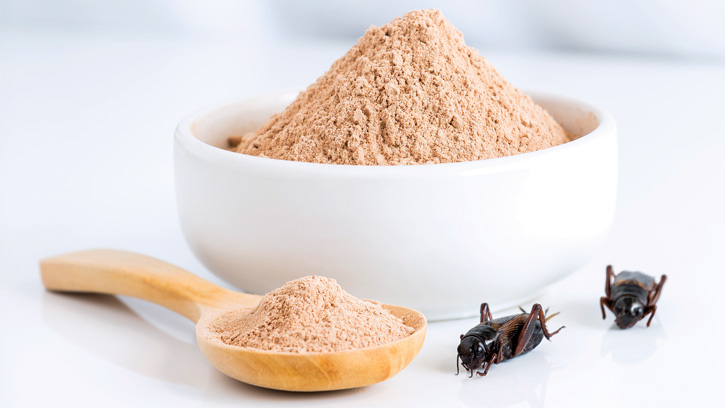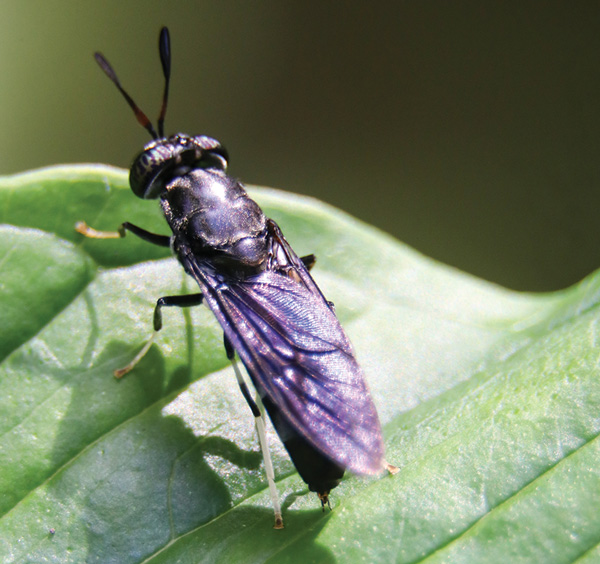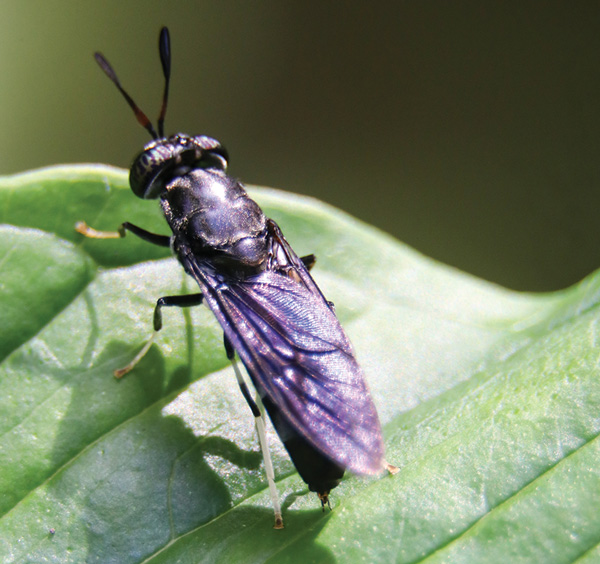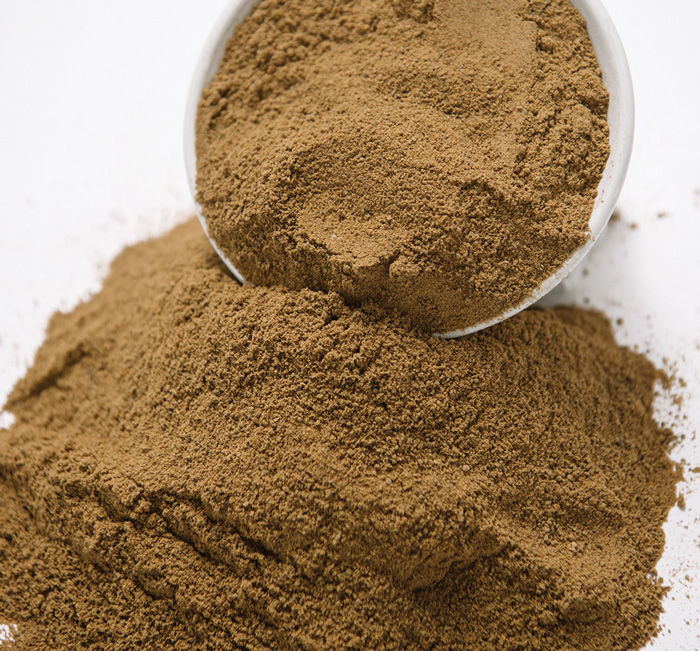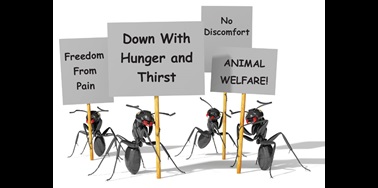What’s All the Buzz About Edible Insects?
Safety & Quality | APPLIED SCIENCE
Will we be farming small bugs for food on a big scale in the near future?
It’s not that far-fetched: Whole insects and insect meals, oils, and flours already are being produced as new sources of sustainable and affordable nutrition in the industrialized world. The global edible insect market is expected to reach $7.96 billion by 2030 in sales of products like animal feed, pet food, protein bars, protein shakes, bakery items, confectionery, and beverages, according to 2019 data from Meticulous Research. Although bugs are not widely accepted as food in Western societies, entomophagy—the consumption of insects—is common in many tropical zones. In fact, insects are a major protein source in parts of Asia, Oceania, Africa, and Latin America.
These farmed insects can be produced with significantly less land and water and fewer greenhouse gas emissions, and can contribute to reducing food and agricultural wastes, reports the Food and Agriculture Organization of the United Nations. Insects need only one-third to one-half the amount of land required to produce a similar amount of protein from pigs or chickens, respectively.
“We can produce over 1 million pounds of protein on an acre of land,” says Carrie Kuball, vice president of sales and marketing at EnviroFlight, which markets animal feed ingredients using black soldier flies (BSF). “We can achieve this using vertical trays in an indoor environment. Poultry or hogs can only produce in the hundreds of pounds of protein per acre.”
Not all of the more than 2,000 species of edible insects are suitable for intensive farming. The list of those considered adaptable for commercial rearing includes BSF, common houseflies, house and field crickets, and yellow and lesser mealworms. These species can grow on a variety of substrates at high densities.
Insect vs. Meat Nutrition
Insects provide nutritional benefits that are comparable with those of meat. Protein content, essential amino acids, and unsaturated fatty acids in edible insects are similar to those in red meat, but unlike meat, edible insects are also a source of fiber and vitamin C (Orkusz 2021).
Edible insects contain higher levels of polyunsaturated fatty acids than meat does. These fatty acids can reduce “bad” cholesterol in the blood and lower the risk of heart disease and stroke. Although commercially grown insects are low in omega-3 fatty acids, ingredients such as flaxseed could be added to their diet to improve their omega-6 to omega-3 fatty acid ratios (Ooninex et al. 2020).
Some insect species contain higher amounts of fat, tocopherol, riboflavin, calcium, zinc, copper, and manganese but lower levels of iron, thiamine, and niacin compared with red meat. The nutritional value of insects varies according to species, metamorphic stage, and feeding substrate, so farmed insects must be assayed and evaluated on a case-by-case basis.
Functional Properties
Edible insects are a potential source of beneficial bioactive or nutraceutical components. In vitro and in vivo animal studies have suggested that consuming edible insects may improve cardiovascular health (Cito et al. 2017), provide antimicrobial peptides to enhance immune function (Tonk and Vilcinskas 2017), and improve metabolic health. Chitin and chitosan, components of adult cricket exoskeletons, have been shown to decrease fat storage in mice fed a high-fat diet (Han et al. 1999).
In human clinical trials, dietary cricket powder had a prebiotic effect by supporting growth of the probiotic Bifidobacterium animalis and reducing plasma TNF-α, suggesting that consumption of crickets may improve gut health and reduce inflammation (Stull et al. 2018). Further studies based on clinical trials are needed to assess health outcomes in humans and determine if edible insects meet the criteria of bioactive food ingredients.
Safety Concerns
Not all insects are safe to eat. Some use toxic chemicals for defense or feed on potentially hazardous substrates, for example, and some adult insect legs have hooks and spikes that can cause physical damage to a diner’s gastrointestinal tract or soft tissues in the mouth.
Insects harvested from the wild may be contaminated with pesticides or have consumed substrate that contains pathogenic microorganisms or prions. Wild insects also are a potential zoonotic risk because they may transfer bacteria, viruses, parasites, and fungi. Insects such as flies are known zoonotic vectors for anthrax, while botulism, parasitosis, and aflatoxin poisoning have been documented from wild insect consumption (Schabel 2010).
Microorganisms such as Staphylococcus aureus, Pseudomonas aeruginosa, Aspergillus tamarii, and Bacillus cereus have been isolated from both the gut and surface of housefly larvae (Musca domestica) cultured on fresh fish exposed to wild fly populations (Banjo et al. 2005). Spore-forming bacteria and Enterobacter spp. were reported in fresh mealworm larvae in amounts comparable with those found in produce (Klunder et al. 2012). And because nematodes, parasitic amoebae, Giardia, and Cryptosporidium species have been reported in harvested wild insects, farmed edible insects should be considered possible vectors for these parasites too.
Another safety concern involves intrinsic proteins causing allergic reactions. Because chitin is present in the exoskeletons of adult insects, allergies similar to those involving shellfish may occur. Also, since they are taxonomically close to house dust mites, edible insects may provoke cross-reactivity with people who are allergic to mites (Lange and Nakamura 2021).
Mycotoxins—fungal metabolites that can cause adverse health effects in humans and animals—have been shown to reduce survival in farmed insects at higher concentrations and affect growth at lower concentrations (Schrogel and Watjen 2019). Despite high levels of mycotoxins in spiked feeding trials with several species of insects, however, no bioaccumulation occurred. But researchers recommend a starvation period of at least 24 hr to remove any lingering mycotoxins in insects’ guts for added safety in industrially farmed insects.
Legal Considerations
Legislation covering the processing, labeling, and inspection of edible insects varies by country and region. European legislation, for example, considers insects bred to be fed to animals as farmed animals themselves, subject to feed ban rules. This means farmed insects cannot be raised on ruminant proteins, meat-and-bone meal, catering waste, or manure and limits the use of certain waste streams as growth substrate.
In the United States, edible insects are considered a novel food and a food additive. Because novel foods have minimal requirements, some U.S. farmers are reluctant to produce insects without more government guidance. Edible insect products do have label standards in the United States: Both the common and the scientific name must be included on the label, along with a potential shellfish allergy warning.
Moving Forward
How will processing affect edible insect nutritional components, digestibility, and safety? Researchers say insects can be regarded as safe, with no more hazards than other animal products, if the insects are properly reared, processed, and stored (Mezes 2018).
EnviroMeal, produced from defatted black soldier flies, is finely ground and high in protein. Photo courtesy of EnviroFlight
With feed costs representing 60%–70% of most animal production systems, insect diets will need to be optimized. Alternative feed substrates should be studied for efficiency, cost savings, waste reduction, and creation of circular economies. EnviroFlight, for example, uses distillers’ grains as a feed substrate for BSF larvae because the company’s plant is based in Kentucky bourbon country, says Kuball.
To increase consumer acceptance, insect meals, flours, and oils could be used as nutritional and functional ingredients in processed formulations. “We use sight and smell to influence consumer perceptions and reduce the ‘ick’ factor,” says Kuball. “Our BSF meal smells like roasted nuts and has a pleasant aroma.”
This approach may reduce consumer rejection and hesitancy caused by the sight of whole insects or larvae. In fact, inclusion of insects in pet food and animal feed is already acceptable to Western consumers. Insect consumption by family pets may increase awareness and open the door for environmentally friendly human food formulations.
Finally, governments need to stay current with innovations in edible insects and provide regulations and guidance that guarantee consumer safety and animal welfare while promoting investment.
Learning Objectives
- Understand the nutritional and environmental advantages of edible insects.
- Assess the safety considerations involved in consuming insects.
- Review the legal and animal welfare aspects of using edible insects as ingredients.
Food Technology Articles

How to Achieve EPR-Forward Packaging
In this two-part series, the author explores the history of Extended Producer Responsibility (EPR), what is needed to help EPR succeed, and how brands can best prepare for EPR.
Battling Biofilms
In this column, the author describes the stages of biofilm development in food processing plants, methods of removal, and best practices for prevention.
Smart Steps to Peak Traceability
Creating an effective road map to advance your food traceability program is key to overcoming data, process, and stakeholder challenges.
Investing in African Heritage Foods
Foods from the African continent, such as millet and hibiscus, are starting to trend in Western diets. WANDA cofounder Tambra Raye Stevenson says that these foods could help solve the nutrition crisis.
Ensuring Quality and Safety in Fried Foods
In this column, the author describes basic principles for maintaining frying oil quality and safety.
IFT Podcasts

EP 11: The Challenge of Water
Water is a critical resource for growing and processing food. This episode discusses the challenges we face regarding water, and present and future solutions to resolve them.
Episode 29: All About Food Safety Culture
In this podcast, we discuss food safety culture, including how food safety culture is established, measured, and how they are expected to change in light of ongoing advancements in food science and policy. Our guests include Hugo Gutierrez, Global Food Safety and Quality Officer for Kerry, and Bob Gravani, Professor Emeritus of Food Science and Director Emeritus of the National Good Agricultural Practices (GAPs) Program at Cornell University.


